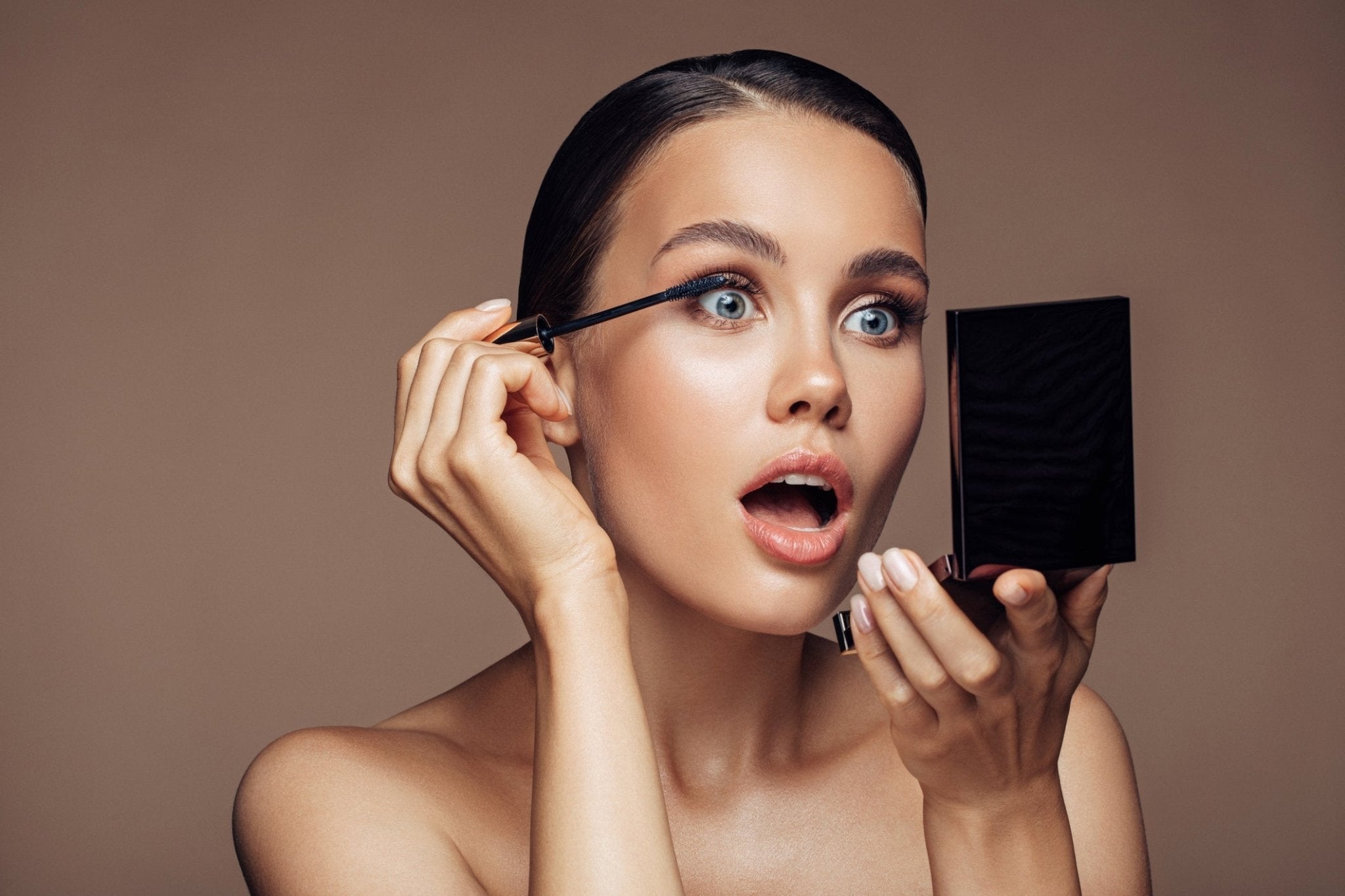We always associate out-of-whack circadian rhythms with disrupted sleep. But have you ever considered what jet lag or even staying up way too late on your phone is also doing to your skin?
The truth is, if you disrupt your circadian rhythms, your entire body will be affected, not just your pillow time. Everything from elevated stress levels to heavy use of blue light-emitting digital devices and jet lag can throw our skin off course, preventing it from smoothly switching to ‘repair mode’ at night and leading to issues like dryness, dehydration, breakouts, dullness and dark circles.
So how can we hit a skin reset? Here’s what you need to know, by Ayesha Muttucumaru.
How skin syncs
Synchronised with a master clock in the brain, circadian rhythms are a range of 24-hour cycles in the human body responsible for coordinating all manner of bodily functions and timing them in such a way so that they tick along as efficiently as possible. They’re guided by a wide range of environmental factors, particularly light and darkness, which is why they’re so closely associated with day and night.
Growing research is revealing the potentially huge influence that circadian rhythms can have on a variety of aspects of mental and physical health. In fact, three scientists were awarded the 2017 Nobel Prize for physiology or medicine for their work on the subject. And, as well as having implications for our overall wellbeing, they're responsible for changes in our skin, too.
“Our skin cells function to their own circadian rhythm, meaning that our skin goes through different stages within 24 hours and reacts differently depending on the time,” explains Dr Sonia Khorana, a GP with a special interest in dermatology (GPwSI) and cosmetic doctor. This rhythm has a far-reaching impact. “Circadian variations in the skin influence moisture loss, pH, sebum production, blood flow, temperature and permeability,” she says.
It’s thought that by working with this rhythm, understanding its ebb and flow and by trying to protect it, we can make the most effective use of our natural repair and protect mechanisms for healthier, more glowing skin.
A day in the life of your skin
Have you ever wondered how your skin changes throughout the day? Dr Khorana explains.
First thing in the morning: “Moisture loss is minimal, whilst blood flow and temperature slowly start to increase as the skin is waking up,” Dr Khorana explains. Provided that you’ve had a good night’s sleep (more on what happens if you haven’t below) you might expect skin to look pretty good since cell regeneration peaks at night.
During the day: Skin switches into ‘protect mode.’ “The skin tries to fight against environmental aggressors such as UV rays and pollution,” says Dr Khorana. “As a result, it gets thicker and produces more sebum to help protect itself.”
“Sebum production is at its peak around midday, and it’s very common to experience the T-zone becoming shiny around lunchtime.” Hence why you may find that your foundation starts to get patchy in the afternoon.
Evening and night-time: Interestingly, as darkness descends, skin can become more vulnerable to dehydration and irritation. “The skin barrier becomes more permeable,” explains Dr Khorana. “This increases moisture loss which makes it susceptible to damage.” This can be particularly troublesome for eczema sufferers as it can exacerbate itching.
However, there is a silver lining to this. “Night time is great for product penetration,” says Dr Khorana, which is why a proper night-time skincare regime can really make the world of difference.
What’s more, it’s at night that skin renewal really gets motoring. “The skin's repair mechanism kicks in with increased blood flow, so it’s really important to look after your skin at night so that it can regenerate,” says Dr Khorana. Skin proliferation (the creation of new cells) is also much higher at night than during the day, so if you are serious about optimising your glow, being mindful of your sleep-wake cycle is vital.
How we disrupt circadian rhythms
In an ideal world where our sleep-wake and skin circadian rhythms run like clockwork, we would get regular, restorative rest so our skin can do its repair shift uninterrupted. However, thanks to the pressures of modern life, this isn’t always possible.
Stress, long and unpredictable hours at work, many hours sat at computers and underlying conditions can throw our natural rhythms off. According to The Sleep Foundation, light is the most powerful influence, a factor that has become increasingly relevant as a result of our heavy use of screens.

The lowdown on blue light and screen time
Whilst there is currently a great deal of noise about blue light disrupting our circadian, research at Oxford University conversely says that our screens do not give off enough blue light to change our body clocks. What is keeping us awake, however, is the content on our phones: the emails, social media and the constant alerts.
The knock-on effect of this is that we then don’t sleep as soundly, which in turn can increase oxidative stress on our skin. “This disrupts the levels of important hormones such as melatonin (the sleep hormone), which counteracts damage to the skin from UV and pollution, as well as human growth hormone which is necessary for the maintenance of collagen and cell regeneration” says Dr Khorana. It also reduces the body’s ability to repair itself at a time that it should be in the best position to do so. “Lack of sleep can cause skin to become dry, accelerate skin ageing and lead to dark circles and puffy eyes,” consultant dermatologist Dr Shaaira Nasir tells us.
There's also emerging evidence demonstrating the direct impact that blue light may be having on our skin. Whilst the largest source of blue light is sunlight, evolving research suggests that our increased blue light exposure to concentrated sources—such as handheld devices for extended periods of time— could be having a worse effect than previously thought. As well as eye strain, holding them as close as we do to our faces and checking them constantly runs the risk of stimulating photo-ageing in the skin, leading to inflammation. A recent Unilever study found that 30 hours of blue light exposure from smartphone or laptop screens can lead to up to a 40 per cent increase in weakened collagen and possibly pigmentation too.
Another study points to the potential for cell damage when blue light is mixed with other wavelengths on the light spectrum. It’s known as the ‘whole light theory.’ To see what this could mean for our skin, it’s first worth considering the science behind solar light…
Sunlight is made up of three components: UV, visible light (which includes blue light) and infrared. Generally speaking, we focus on protecting ourselves from UV rays, using sunscreen to reduce the risk of premature ageing, burning and skin cancer. However, a recent study published in the Federation of American Societies for Experimental Biology revealed that when UV rays are combined with visible and infrared light, the deeper dermal layer of the skin (aka the dermis, where skin building blocks collagen and elastin are found) can be damaged to such a degree that it may be worth adapting our skincare routine to protect skin against all three.
“Visible and infrared on their own have a small effect on skin damage but their potency is increased dramatically when UV is present,” commented Professor Mark Birch-Machin, the study lead and a professor of Molecular Dermatology at Newcastle University's Faculty of Medical Sciences. He used the analogy of a boxing match to explain the effect. “The first blow, the UV, does the major damage, and then the smaller jabs, punches two and three, represented by visible and infrared, topple the boxer to the floor.”
Time zone skin disruption
Jet lag is another factor that can disrupt the beat of our circadian drum and cause changes to the skin. Not only do you miss out on sleep when you're travelling across time zones, but as Dr Khorana explains “Moisture levels can also decrease and pH levels may be lowered, which is why skin feels dry and looks dull.” She adds, “Some people also experience breakouts after long haul flights as skin may produce extra sebum to overcompensate for the dryness.”
While sleeping patterns adjust, melatonin and human growth hormone levels are likely to be affected, too (as mentioned earlier), which can affect the cell regeneration process. Then there’s the lack of luminosity, which is a common complaint when altitude and a change of time zones mix. In fact, it was the main skin issue cited among a group of 28 flight attendants in a study conducted by 35 Thousand in the development of the 35 Thousand skincare range.
The study was conducted in collaboration with Professor Mark Birch-Machin and his team at Newcastle University (who conducted the light study mentioned earlier) and involved participants providing skin swipes over six weeks before and after long-haul flights to track any changes. The flight attendants also filled in a questionnaire on how their skin looked and felt.
“At the extreme end of the spectrum in terms of disrupted rhythms, the quality of skin suffered greatly, with loss of vitality and radiance being one of their primary concerns,” 35 Thousand’s Product Development Director Claire Bristow explains. As well as dryness, dehydration and fine lines and wrinkles had worsened too.
Glow hack: when travelling, spritz skin liberally with the 35 Thousand Refresh & Revive Mist which will revive skin, reduce inflammation and protect against dehydration.

So what can we do to counteract body clock disruption?
Whilst it’s impossible to put a halt to the factors that can disrupt our circadian rhythms completely, we can mitigate the risks with a few simple tweaks to our daily routine:
“Regular exercise, exposing yourself to light and dark at the right times of the day and creating a wake-up and wind-down routine can really help,” advises Dr Khorana. “As sleep is really important to regulate the levels of melatonin and human growth hormone, I would also advise having a chat with your GP if you struggle getting to sleep, as they can refer you to Sleepstation, a 6-week online course app that is free to use with a referral.”
It's also important we try to relax as much as possible in the evenings, and limit screen exposure. “Avoid using your phone 2-3 hours before bed,” Dr Nasir recommends. Listening to music or even just swapping your phone for a book can make a world of difference.
Can skincare help?
100% yes. As well as products that work with and support skin’s natural circadian rhythms, it’s also important to have a regime that helps alleviate the effects of oxidative stress, inflammation, fatigue, dryness, dehydration and lack of luminosity, which is where 35 Thousand skincare comes in.
At the heart of every 35 Thousand product is the OTG-7 Complex, which has been specifically created to counteract the impact of stress on skin caused by modern life. “We have included an ingredient taken from a medicinal plant originating in South Korea in our OTG-7 Complex,” Claire Bristow explains. “It’s called Lespedeza Capitata (also known as Korean Bush Clover), and it’s effective in regulating key biological functions of the skin including the Nrf2 pathway which follows circadian rhythms. It also has a protective action against blue light-induced stress on skin cells and is an all-round skin hero.”

Skincare timing
Did you know that timing is also important when it comes to respecting skin’s natural circadian rhythm? Applying certain actives at specific times of the day can also optimise your glow. Here’s how:
Morning
“I recommend using an antioxidant (for example, a serum with vitamin C) during the day and complementing it with a broad-spectrum sunscreen,” says Dr Khorana. “Vitamin C and sunscreen work really well together as vitamin C actually enhances your sunscreen!” This will help to protect skin from environmental aggressors and UV rays, thereby reducing free radical damage and inflammation. Make sure to reapply your sunscreen throughout the day though to keep protection topped up.
Try 35 Thousand All-In Day Serum SPF30, a broad-spectrum mineral SPF that's ideal for all skin types (even acne prone) and also contains iron oxide to soothe inflammation. Its subtle tint offsets the white cast synonymous with mineral sunscreens of the past and gives skin a healthy-looking glow.
Afternoon
“Skin is likely to feel its oiliest in the afternoon,” notes Dr Khorana which, as mentioned earlier, serves a protective function. If skin’s producing extra sebum to overcompensate for dryness though, she recommends using a light moisturiser in your routine or balancing the oiliness with a blotting paper if needed.
Evening and night
Look to support skin’s night-time rhythm by using products that prevent water loss (due to your skin barrier becoming more permeable) and bolster its renewal mechanism.
“Your evening skincare routine should focus on repairing and hydrating your skin,” recommends Dr Khorana. If you’ve got eczema or dryness-prone skin, flare-ups can get worse at night so it makes sense to use topical treatments and soothing creams then to keep itching at bay.
Think of the 35 Thousand Really Radiant Cream as your at-home ‘facial-in-a-bottle. With a mixture of skin-firming tripeptides, vitamins, amino acids and hyaluronic acid pearls, it leaves tired, stressed-out skin brighter, calmer and noticeably more hydrated by morning. So even if you don’t have a good night’s sleep, you can at least look like you have.
Follow Ayesha on Instagram



